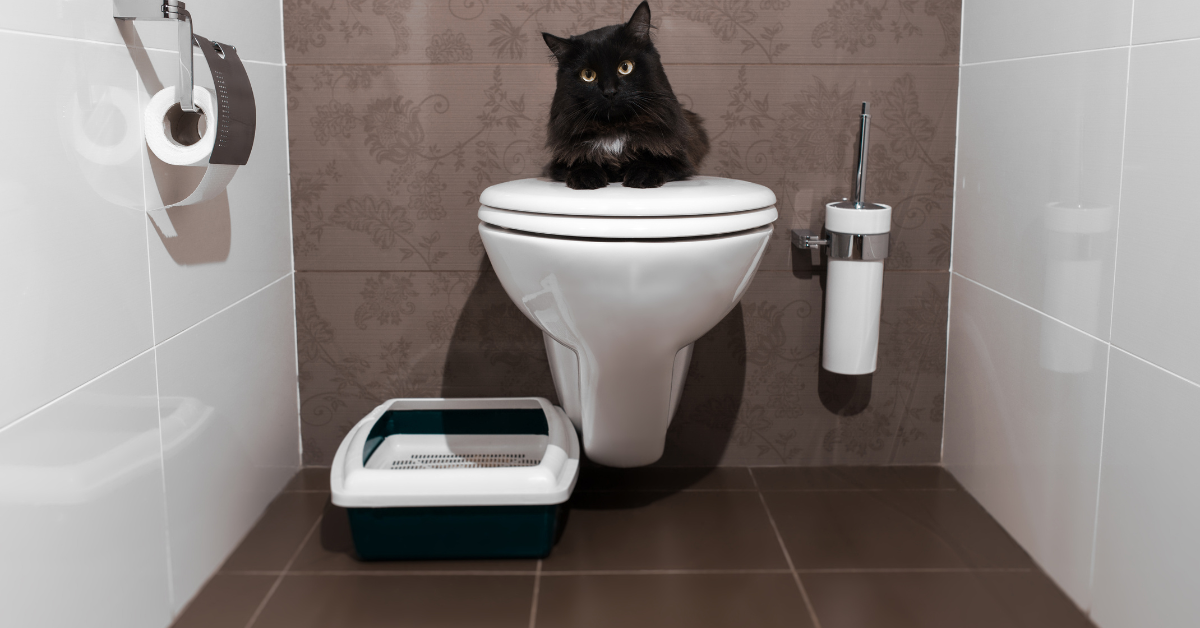Prevent Clogs and Damage: Don't Flush Cat Poop Down Your Toilet - Professional Insights
Prevent Clogs and Damage: Don't Flush Cat Poop Down Your Toilet - Professional Insights
Blog Article
What're your concepts about How to Dispose of Cat Poop and Litter Without Plastic Bags?

Introduction
As pet cat proprietors, it's important to bear in mind just how we take care of our feline close friends' waste. While it may seem convenient to purge cat poop down the toilet, this practice can have damaging effects for both the atmosphere and human health and wellness.
Ecological Impact
Flushing feline poop presents unsafe virus and bloodsuckers right into the water system, positioning a considerable risk to aquatic ecosystems. These pollutants can adversely impact aquatic life and compromise water quality.
Wellness Risks
Along with ecological worries, flushing feline waste can likewise present health dangers to human beings. Pet cat feces might contain Toxoplasma gondii, a bloodsucker that can create toxoplasmosis-- a possibly serious health problem, specifically for pregnant females and individuals with weakened immune systems.
Alternatives to Flushing
The good news is, there are safer and extra accountable methods to deal with cat poop. Think about the adhering to choices:
1. Scoop and Dispose in Trash
One of the most usual technique of dealing with feline poop is to scoop it into a biodegradable bag and toss it in the trash. Make certain to make use of a dedicated trash scoop and get rid of the waste without delay.
2. Use Biodegradable Litter
Opt for naturally degradable cat litter made from products such as corn or wheat. These clutters are eco-friendly and can be safely gotten rid of in the trash.
3. Bury in the Yard
If you have a lawn, take into consideration hiding pet cat waste in an assigned location far from veggie yards and water sources. Make certain to dig deep sufficient to stop contamination of groundwater.
4. Install a Pet Waste Disposal System
Invest in a family pet garbage disposal system particularly created for feline waste. These systems make use of enzymes to break down the waste, reducing odor and environmental impact.
Conclusion
Responsible pet possession prolongs past supplying food and shelter-- it additionally entails appropriate waste administration. By avoiding flushing feline poop down the bathroom and choosing different disposal methods, we can minimize our ecological impact and shield human health and wellness.
Why Can’t I Flush Cat Poop?
It Spreads a Parasite
Cats are frequently infected with a parasite called toxoplasma gondii. The parasite causes an infection called toxoplasmosis. It is usually harmless to cats. The parasite only uses cat poop as a host for its eggs. Otherwise, the cat’s immune system usually keeps the infection at low enough levels to maintain its own health. But it does not stop the develop of eggs. These eggs are tiny and surprisingly tough. They may survive for a year before they begin to grow. But that’s the problem.
Our wastewater system is not designed to deal with toxoplasmosis eggs. Instead, most eggs will flush from your toilet into sewers and wastewater management plants. After the sewage is treated for many other harmful things in it, it is typically released into local rivers, lakes, or oceans. Here, the toxoplasmosis eggs can find new hosts, including starfish, crabs, otters, and many other wildlife. For many, this is a significant risk to their health. Toxoplasmosis can also end up infecting water sources that are important for agriculture, which means our deer, pigs, and sheep can get infected too.
Is There Risk to Humans?
There can be a risk to human life from flushing cat poop down the toilet. If you do so, the parasites from your cat’s poop can end up in shellfish, game animals, or livestock. If this meat is then served raw or undercooked, the people who eat it can get sick.
In fact, according to the CDC, 40 million people in the United States are infected with toxoplasma gondii. They get it from exposure to infected seafood, or from some kind of cat poop contamination, like drinking from a stream that is contaminated or touching anything that has come into contact with cat poop. That includes just cleaning a cat litter box.
Most people who get infected with these parasites will not develop any symptoms. However, for pregnant women or for those with compromised immune systems, the parasite can cause severe health problems.
How to Handle Cat Poop
The best way to handle cat poop is actually to clean the box more often. The eggs that the parasite sheds will not become active until one to five days after the cat poops. That means that if you clean daily, you’re much less likely to come into direct contact with infectious eggs.
That said, always dispose of cat poop in the garbage and not down the toilet. Wash your hands before and after you clean the litter box, and bring the bag of poop right outside to your garbage bins.
https://trenchlesssolutionsusa.com/why-cant-i-flush-cat-poop/

I hope you liked our post on How to Dispose of Cat Poop and Litter Without Plastic Bags. Thank you for spending some time to read through our content. Make sure you take a moment to share this blog entry if you liked it. I value reading our article about Can You Flush Cat Poo or Litter Down the Toilet?.
Suggested Site Report this page